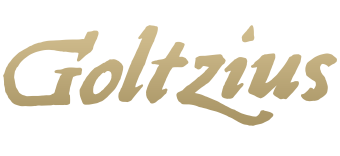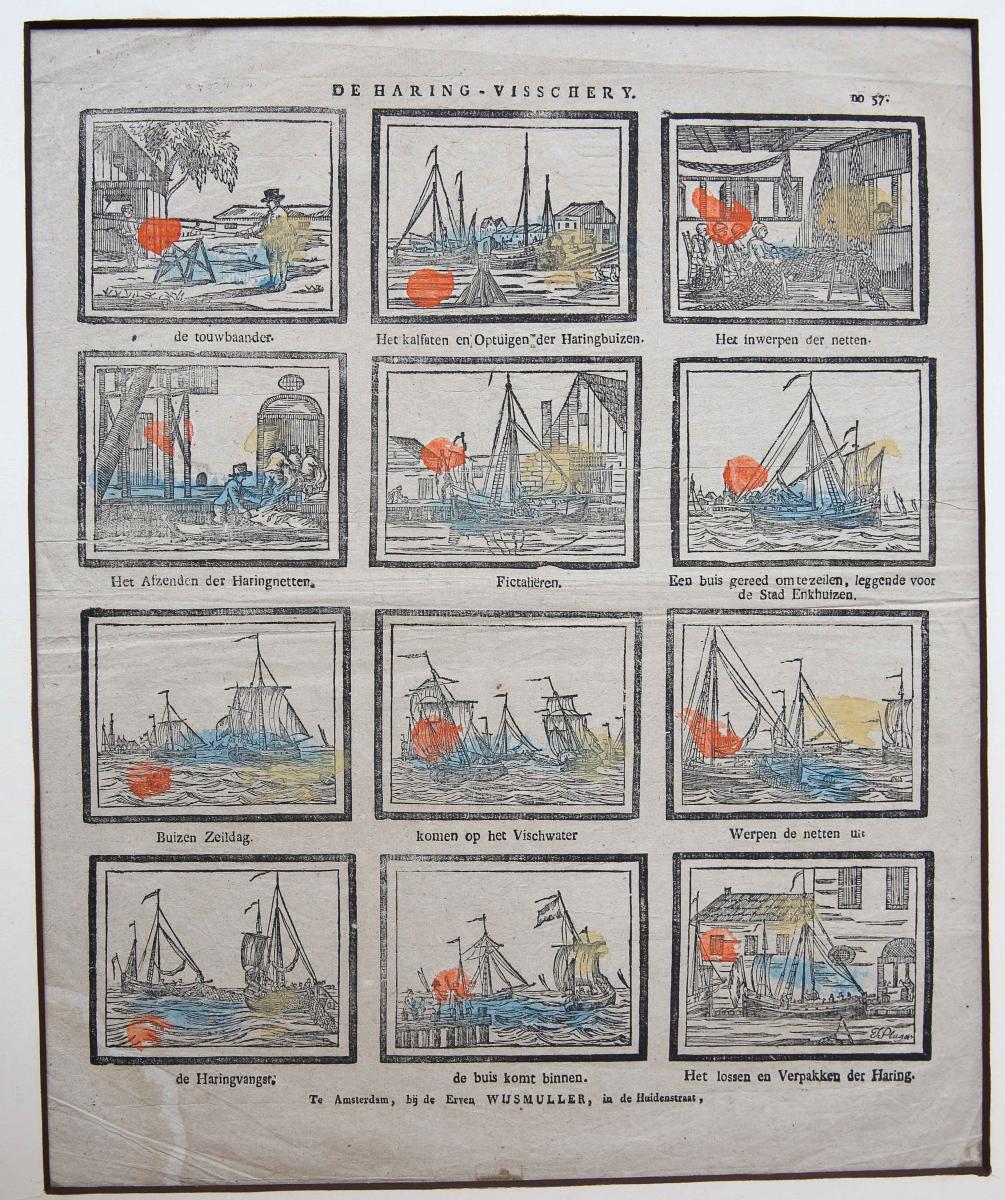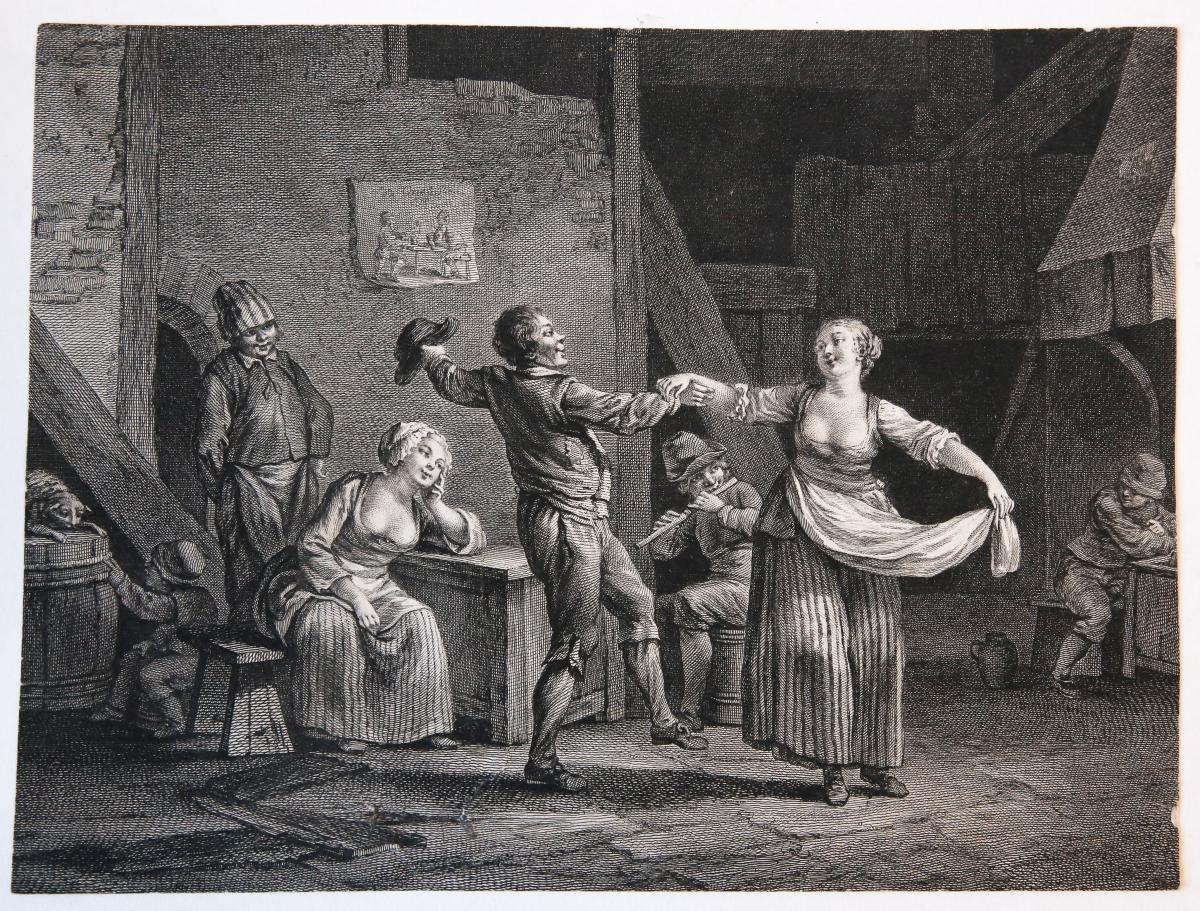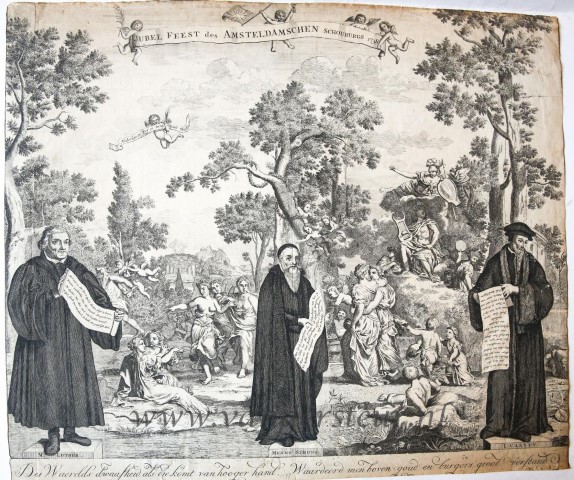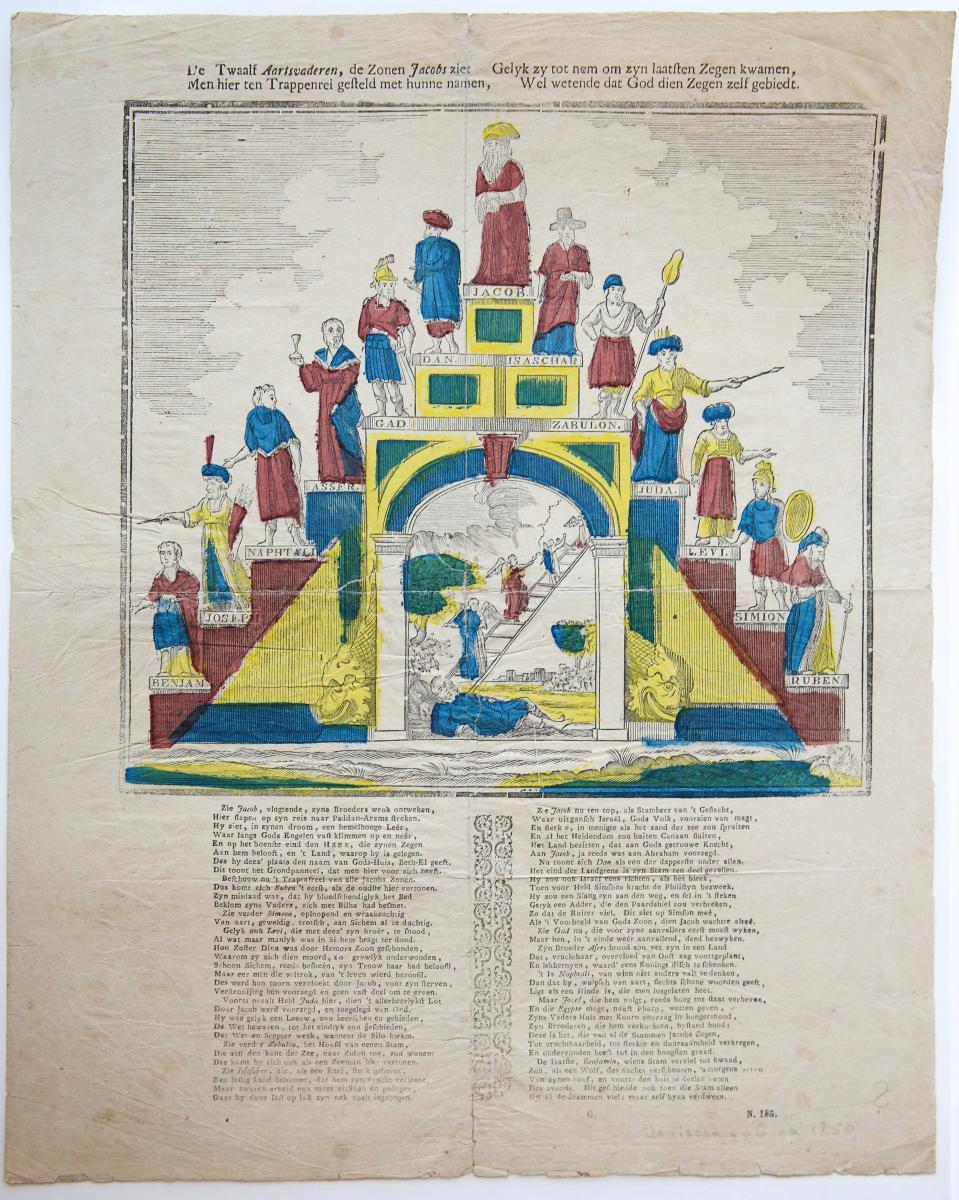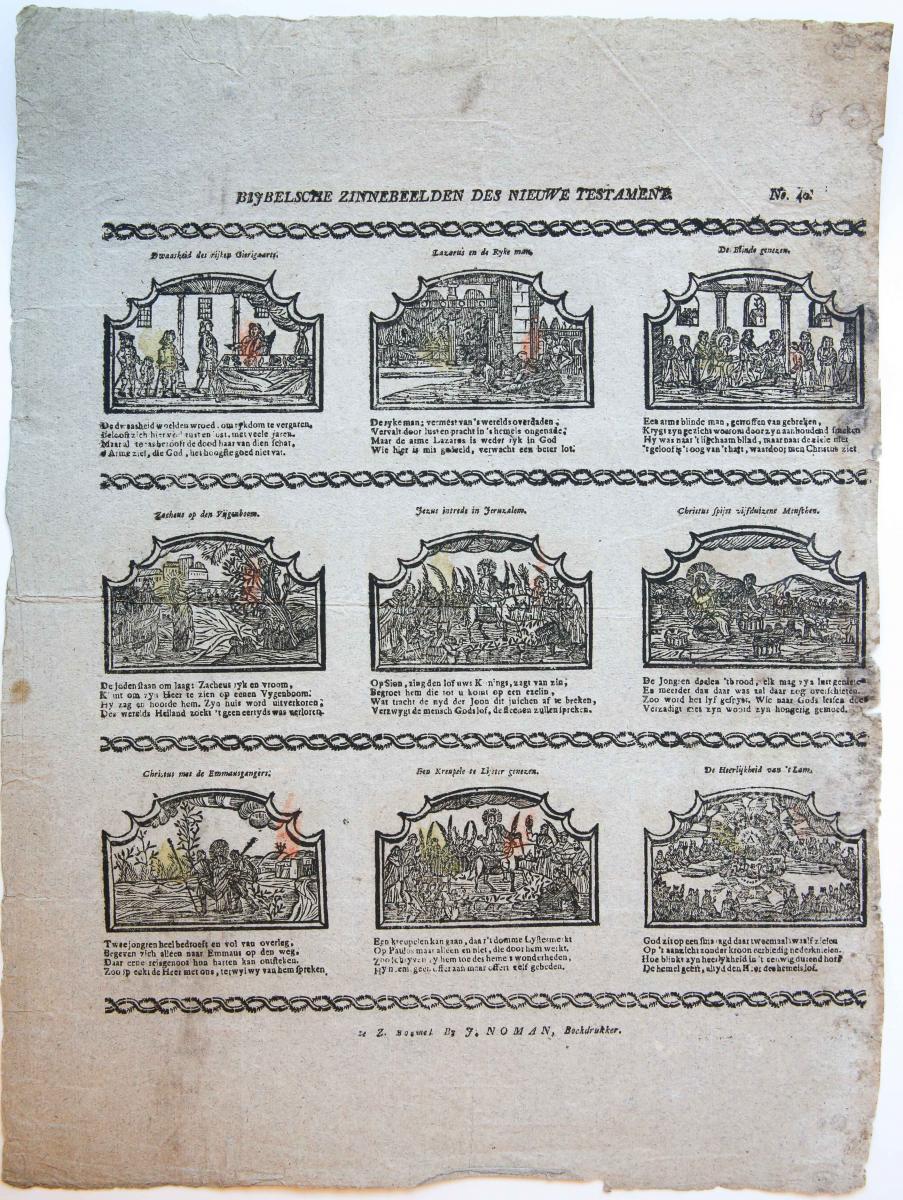Beschrijving
Catchpenny print with 12 images of activities around the herring harvest, such as the preparations and the tasks at sea. The captions read: ‘de touwbaander’ (a rope maker), ‘Het kalfaten en Optuigen der Haringbuizen’ (repairing and rigging Herring busses, the vessels used by Dutch and Flemish herring fishermen), ‘Het inwerpen der Netten’ (bringing the nets aboard), ’Het Afzenden der Haringnetten’ (taking away the nets), ‘Fictaliëren’ (provisioning), ‘Een buis gereed om te zeilen, leggende voor de Stad Enkhuizen (a buss ready to set sail off the coast of Enkhuizen), ‘Buizen Zeildag’ (ships setting sail), ‘komen op het Vischwater’ (ships reaching the fishing ground), ‘werpen de netten uit’ (throwing out of the nets), ‘de Haringvangst’ (herring harvest), ‘de buis komt binnen’ (ships returning), Het lossen en Verpakken der Haring (unloading and packaging the herring). The woodcuts are signed by J. Plugger, and were used in his book De haringvisscherij. Gouda, G.B. van Goor, 1848. The impressions in Plugger’s book are few millimetres higher at the top, compared to the impressions in the print. Noman probably bought the plates and cut off a small part at the top to better fit the images on one large sheet of paper.Plugger’s book follows the logical order of the activities, but Noman changed the order of illustrations. The rigging of the vessels was the fourth illustration in the book, but was moved forward in the print as the second illustration. This means that in Noman’s illustration do not follow the right order of events: the ships are already rigged (ill. 2), before the nets are restored (ill. 3) and brought to the ships (ill. 4). To keep the order of the images logical, Noman changed some of the captions. Illustration 3, the restoring of the nets in Plugger’s book, now bears a caption identifying the image as the bringing aboard of the nets. Noman also changed the setting. Whereas in Plugger’s book the ships are Flemish, Noman specifically mentions that the ships set sail from the city of Enkhuizen. Zaltbommel, J. Noman, or J. Noman & Zoon (1814 – 1845); via de Erven Wijsmuller, whose address is mentioned on the plate: ‘Te Amsterdam, bij de Erven Wijsmuller, in de Huidenstraat’; numbered ‘No. 57.’ in upper right corner.
